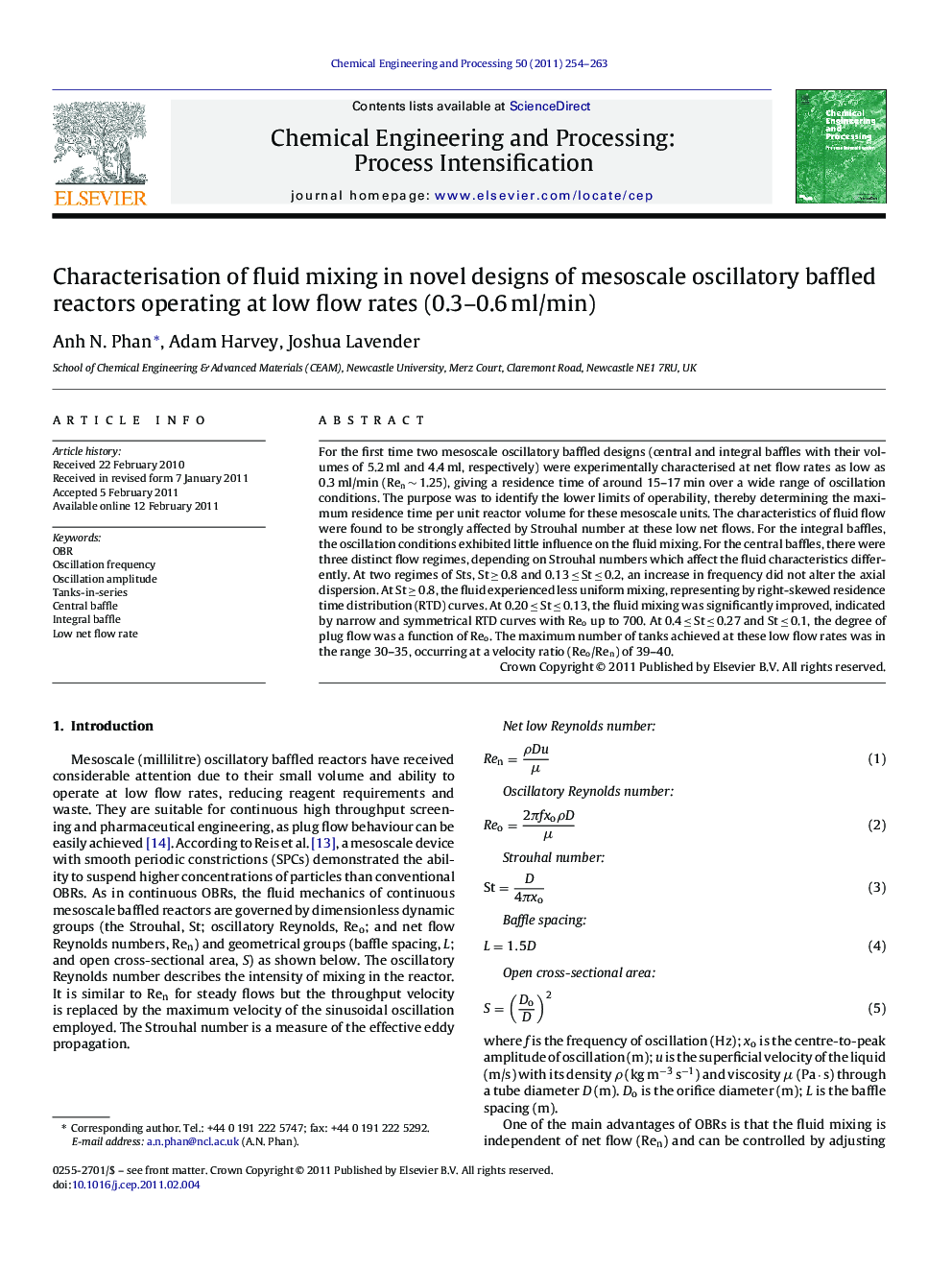| Article ID | Journal | Published Year | Pages | File Type |
|---|---|---|---|---|
| 687644 | Chemical Engineering and Processing: Process Intensification | 2011 | 10 Pages |
For the first time two mesoscale oscillatory baffled designs (central and integral baffles with their volumes of 5.2 ml and 4.4 ml, respectively) were experimentally characterised at net flow rates as low as 0.3 ml/min (Ren ∼ 1.25), giving a residence time of around 15–17 min over a wide range of oscillation conditions. The purpose was to identify the lower limits of operability, thereby determining the maximum residence time per unit reactor volume for these mesoscale units. The characteristics of fluid flow were found to be strongly affected by Strouhal number at these low net flows. For the integral baffles, the oscillation conditions exhibited little influence on the fluid mixing. For the central baffles, there were three distinct flow regimes, depending on Strouhal numbers which affect the fluid characteristics differently. At two regimes of Sts, St ≥ 0.8 and 0.13 ≤ St ≤ 0.2, an increase in frequency did not alter the axial dispersion. At St ≥ 0.8, the fluid experienced less uniform mixing, representing by right-skewed residence time distribution (RTD) curves. At 0.20 ≤ St ≤ 0.13, the fluid mixing was significantly improved, indicated by narrow and symmetrical RTD curves with Reo up to 700. At 0.4 ≤ St ≤ 0.27 and St ≤ 0.1, the degree of plug flow was a function of Reo. The maximum number of tanks achieved at these low flow rates was in the range 30–35, occurring at a velocity ratio (Reo/Ren) of 39–40.
